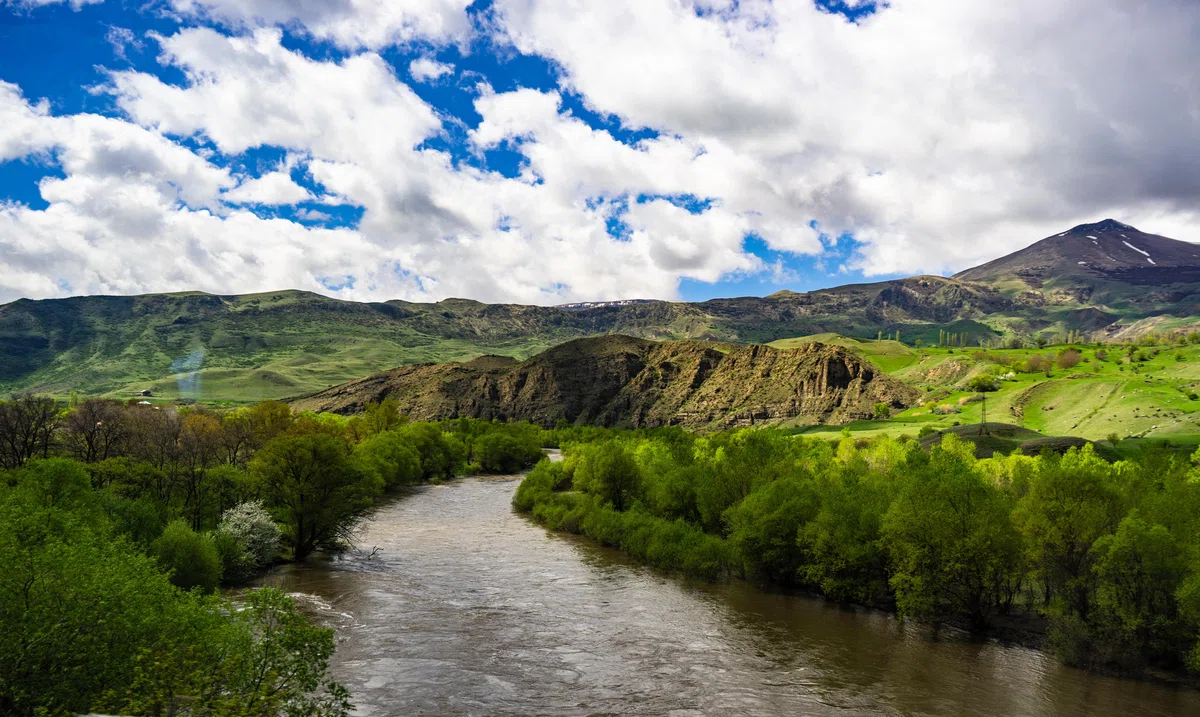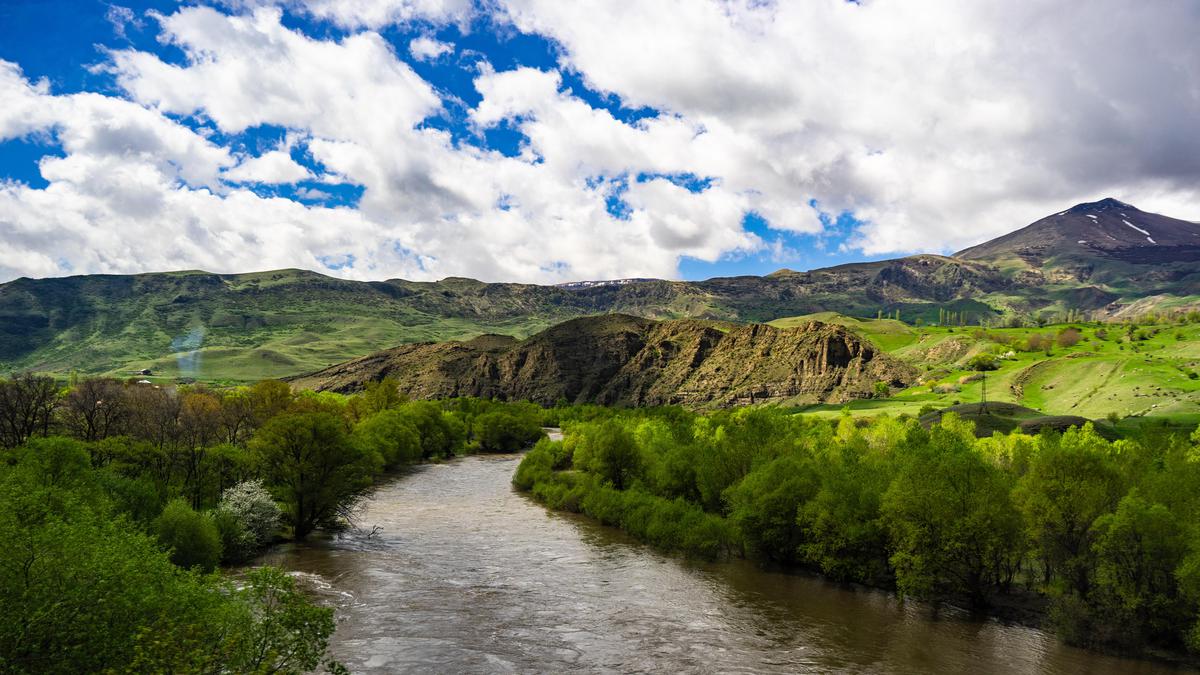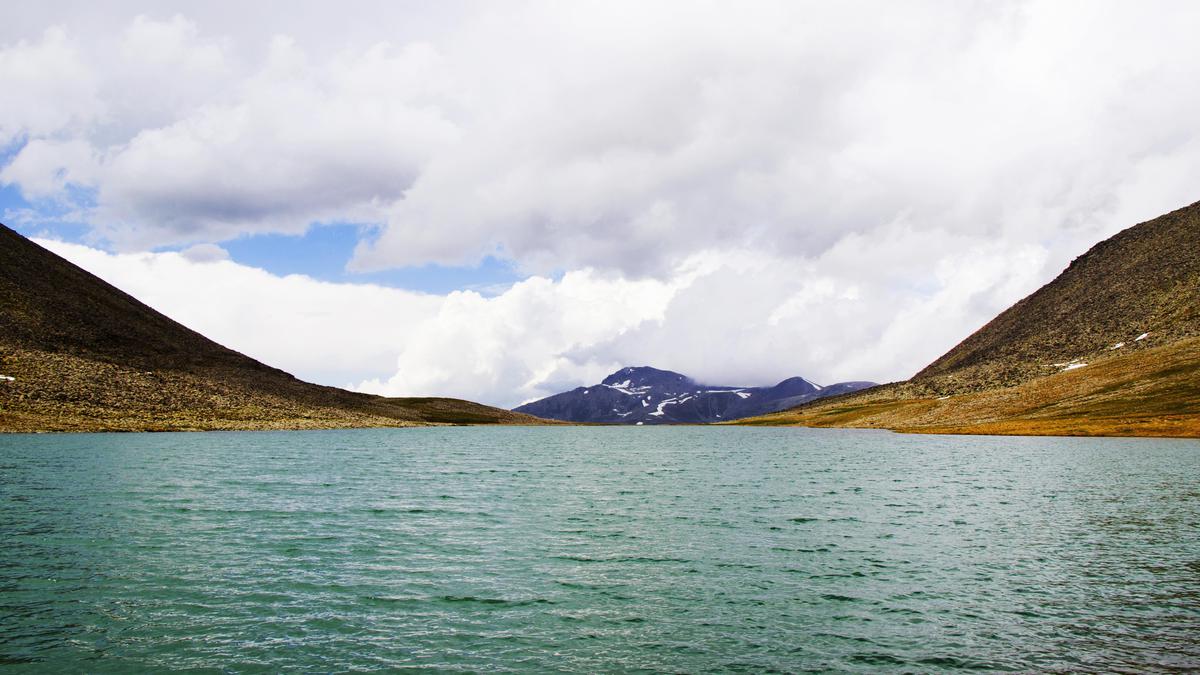
The most beautiful national parks in Georgia. Javakheti National Park.
Javakheti National Park is famous for its diversity of flora and fauna. The relief of the highlands consists of mountains and hills of volcanic origin. There is also a huge number of small and large lakes. If you want to see the most beautiful natural expanses, then by all means visit the Javakheti National Park.
According to today's administrative-territorial division, Javakheti is part of the Samtskhe-Javakheti region and covers the municipalities of Akhalkalaki, Ninotsminda, partially Aspindza and Borjomi. This is one of the oldest corners of Georgia, which differ in their landscape and relief.
The Javakheti region is located on the Javakheti volcanic highlands and is surrounded by ridges: on the south side of Nialiskuri, on the east side of Samsari and Gultoveli, and on the north side of Sharvasheti. On the western side, the Kura River flows through its territory. The highlands are dominated by a harsh (dry) continental climate. It is usually a cold, harsh winter here. The average temperature in January is below 0 °C, and the amount of annual precipitation does not exceed 500-600 mm.
This climate has caused the presence of special natural conditions here, characteristic only of Southern Georgia, mountainous steppe landscapes, on which there are almost no forests, and on which there are artificially planted pine groves.

NINOTSMINDA
The relief of the Javakheti Highlands consists of volcanic mountains and hills. In the basins between them there are about 80 large and small lakes. The area of most of them does not exceed 1 km2, although among them there is the largest lake in Georgia, Paravani (height 2073 m above sea level, area 37.5 km2, volume 91 km2, maximum depth 3.3 m) and the most watery lake Tabatskura. In winter, most of these lakes freeze for a long time. Several species of fish live in rivers and lakes: trout, chub, temple, bystryanka, carp, barbel, etc. Fishing is the main occupation of the local population.
To protect the lakes of Javakheti and its unique landscape, the Javakheti National Park was created on the initiative of the Agency of Nature Protection Territories. The total area of the park is 14,200 hectares. The park covers part of the territory of the municipality of Akhalkalaki and Ninotsminda, as well as several nature reserves. The improvement of the national park is currently underway. The project is being implemented by the World Wide Fund for Nature Protection (WWF Germany) and the Bank for Reconstruction of Germany.
There are a lot of underground waters in the Javakheti Highlands. In the municipality of Ninotsminda, to the west of Lake Khanchala is the village of Dilifi, known for its crystal clear water and medicinal acidic waters.
Location: Javakheti Highlands, south-eastern part of the Akhalkalaki plateau.
Distance: from Tbilisi - 180 km.
Altitude above sea level: 1980 m.
Terrain: Mountainous.
Climate: sharply continental, characteristic of the temperate zone. Winter is cold with little snow cover. The average temperature in January is 5-10 ° C. Summer is cool. The average annual temperature is 16°C.
Average annual precipitation: 700-750 mm.
Duration of sunshine per year: 2200 hours.

Go to the amazing world of Javakheti National Park and enjoy its unique flora and fauna! The variety of terrain of this highland of volcanic mountains and hills is amazing. Magnificent lakes await you here, creating breathtaking natural scenery.
The national park is part of the Samtskhe-Javakheti region according to the modern administrative-territorial division. Its boundaries include the municipalities of Akhalkalaki, Ninotsminda, and parts of Aspindza and Borjomi. It is one of the oldest regions of Georgia, famous for its special landscape and relief. The park is located on the Javakheti volcanic highlands and is surrounded by mountain ranges. On its southern side stretches the Nialiskuri Range, on the east - Samsari and Gultoveli, and on the north - Sharvashti. The Kura River runs along the western border of this region. It has a harsh continental climate with distinctly cold and harsh winters. In January, the average temperature drops below zero and the annual rainfall ranges from 500 to 600 mm.
A trip to the national park promises to be exciting and unforgettable. You can enjoy magnificent natural views, explore unique flora and fauna, and learn to appreciate the beauty and richness of this ancient corner of Georgia. Highlands, thanks to its special climate, creates unique natural conditions that are unique only to southern Georgia. Here you will find mountainous steppe landscapes, where there are almost no forests, and instead there are artificially created pine groves. The relief of the highlands is formed by volcanic mountains and hills, between which there are about 80 lakes and small lakes. Most of them have an area of less than 1 km ², although among them is the largest lake in Georgia - Paravani. It is situated at an altitude of 2073 meters above sea level and has an area of 37.5 km², a volume of 91 km³, and a maximum depth of 3.3 meters. Another significant lake in the area is Lake Tabatskura. In winter, most of the lakes are frozen for a long time. The rivers and lakes in the Highlands are home to a variety of fish species, including trout, chub, tempura li, bullhead, carp, barbel and others. Fishing is the main occupation of the local population and an important part of their lives.
A visit to the area will allow you to enjoy the amazing nature, where volcanic mountains, hills and lakes are in harmony. You will be able to observe picturesque landscapes, immerse yourself in the tranquility and silence of the surrounding nature and, of course, try your hand at fishing as the locals do.
Тo preserve the unique lakes and the unique landscape, a national park was created at the initiative of the Agency for Nature Conservation Areas. The total area of the park is 14,200 hectares. It covers part of the territory of Akhalkalaki and Ninotsminda municipalities, as well as several zakazniks. At present active work on the improvement of the national park is carried out by the World Wide Fund for Nature Protection (WWF Germany) and the Reconstruction Bank of Germany. The creation of the national park is important for the preservation of the natural heritage of the region. The park aims to protect the lakes, mountain landscapes, and diverse flora and fauna that are unique natural resources in Georgia. It also promotes ecotourism and the sustainable development of local communities.
The Highlands is rich in groundwater. The village of Dilifi, west of Lake Khanchala, which is famous for its crystal clear water and curative acidic springs, is especially famous. Here you can enjoy the great taste of natural drinking water and take advantage of its healing properties. These natural riches attract many people wishing to recover and improve their health. Characteristic for this region sharply continental climate creates interesting conditions for visiting the park. Winters are cold here with little snow cover. In January, the average temperature ranges from -5 to 10 degrees Celsius. Summers in the park are cool, and the average annual temperature is about 16 degrees Celsius. Sunshine delights park visitors for about 2,200 hours a year. Precipitation in this region is moderate, with an average annual rainfall of approximately 700-750 millimeters.
We invite you to share your impressions of your visit to Javakheti National Park in the comments below. If you have questions about the park, its attractions, trails or environmental initiatives, feel free to ask. Our team will be happy to answer all your questions and share useful information.












32 comments
Log in to leave a comment
The park is home to a diverse range of flora and fauna, including rare and endangered species. As you explore the park's vast expanse, you may encounter majestic birds of prey soaring through the skies or catch a glimpse of elusive wildlife like deer and foxes. The pristine lakes, such as Paravani Lake, add to the park's allure and offer a serene setting for relaxation and contemplation.
In addition to its natural beauty, Javakheti National Park holds significant cultural and historical value. It is dotted with ancient ruins and archaeological sites that serve as a testament to the region's rich past. Exploring these remnants of bygone civilizations provides a fascinating glimpse into the area's history.
Whether you choose to hike through the park's scenic trails, embark on a wildlife-watching adventure, or simply soak in the tranquility of nature, Javakheti National Park offers an unforgettable experience. The park's pristine beauty and untouched landscapes make it a must-visit destination for anyone seeking solace and inspiration amidst Georgia's natural wonders.
As you visit Javakheti National Park, be sure to respect and preserve its delicate ecosystem. Practice responsible tourism by following designated trails, refraining from littering, and adhering to any guidelines set by park authorities. By doing so, we can ensure that this magnificent park remains a sanctuary for generations to come.
Такой климат и обусловил наличие здесь особых природных условий, характерных только для Южной Грузии.
Рельеф Джавахетского нагорья состоит из вулканических гор и холмов. В находящихся между ними котловинах около 80-ти больших и малых озёр. Зимой большинство из этих озёр на долгое время замерзает. Рыболовство является основным занятием местного населения.
Край Джавахети находится на Джавахетском вулканическом нагорье и окружен хребтами. С запада протекает река Кура.
Для защиты озёр создан национальный парк Джавахети.
На Джавахетском нагорье много подземных вод. В селе Дилифи, есть источник известный своей кристально чистой водой и лечебными кислыми водами.